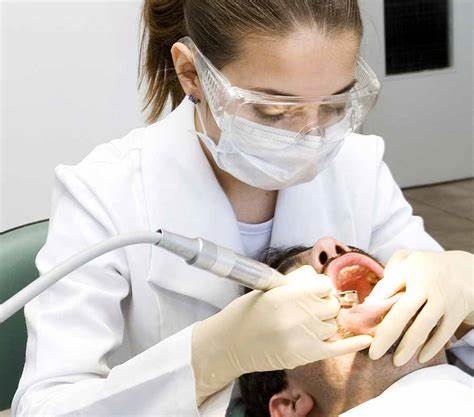What is the best form of sterilization in dentistry? One person for one hand piece
Why is oral treatment “one person, one hand piece”?
The “person” we are talking about here refers to the patients in the stomatology department, and the “machine” refers to the dental hand piece dedicated to the stomatology department (the “mobile phone” mentioned here does not refer to the mobile phone we use for general communication), that is, the drill. In dental drills, the part that dentists usually hold in their hands, is called the “dental handpiece”.

The dental handpiece works in and out of the patient’s mouth and is the most vulnerable and most contaminated oral instrument. If it is not thoroughly disinfected, it will become a serious source of infection, causing terrible consequences such as cross-infection. An important reason why many patients are afraid of going to the dentist is that they are afraid of dental hand pieces. Firstly, they are afraid of the pain when drilling teeth, and even more afraid that the dental handpieces used by many patients are too dirty, and they are afraid of contracting infectious diseases! With the popularization of medical knowledge, people’s health awareness is increasing day by day, and people pay more attention to the quality of life. More and more patients have such concerns and raise such questions. Indeed, such concerns are well-founded. If the instruments in the stomatology department are not thoroughly sterilized, in the process of inspection and treatment, these instruments are likely to become “killers” that endanger the health of patients and staff! In addition to infectious diseases that can be transmitted through the digestive tract, such as hepatitis A and other infectious diseases, blood-borne diseases, such as hepatitis B, AIDS, etc., may also be transmitted to others through dental handpieces. Because exposed pulp, bleeding gums, ulcers or small abrasions on the oral mucosa, etc., may become the entrance of blood-borne infection.
In recent years, following the emergence and widespread promotion of disposable medical syringes, disposable instrument boxes (including mouth mirrors, probes, forceps, plates, scarves, tissues, etc.) used in stomatology have also been widely used. However, due to the particularity of dental handpieces, “disposable handpieces” have not been achieved in the world. This is because the price of dental handpieces is relatively expensive, and the price of ordinary dental handpieces is also around USD 150. Imported contra-angle handpieces with lighting optical fibers can easily cost tens of thousands of USD. This cost cannot be added to the patient’s treatment fee.
Due to the miniature ball bearings and rubber or plastic gaskets in the dental handpiece, its rotation speed can reach hundreds of thousands of revolutions per minute. If it is sterilized by an ordinary high temperature and pressure cooker, the dental handpiece will be damaged soon; Using the drug soaking method can also cause corrosion and rotational failure of the dental handpiece. Other methods of disinfection, such as scrubbing with 75% alcohol, irradiating with ultraviolet light, or high-temperature rapid sterilization with heated quartz beads, are not reliable for handpiece disinfection. In recent years, manufacturers have produced a special high-temperature and high-pressure steam sterilizer for dental handpieces that can control the disinfection temperature at 134°C. This temperature can sterilize without damaging the gasket of the dental handpiece, which makes the dental handpiece “one person, one person”. The plan of “one person, one use, one disinfection” has been realized.
Now, the method commonly used in hospitals is to drip oil on the dental handpiece cleaned by ordinary methods in advance, put it in a special plastic bag, seal it with a sealing machine, put it in a sterilizer for dental handpieces for disinfection, and save it for later use. . Only open the plastic bag on the spot when the patient uses it. Sterilization using this method is reliable. Although this method will shorten the life of the handpiece compared to the alcohol scrub method, it is necessary and worthwhile for the health of dental patients.
Please note that “one person, one machine” and “one person, one use, one disinfection” have become the country’s rigid regulations. Whether it is a large hospital or a small clinic, it must be “one person, one machine”, otherwise it is illegal operation.
Maybe one day, people will invent low-cost plastic dental handpieces, just like short-term plastic movement watches, and realize “disposable dental handpieces” that are discarded after use.


